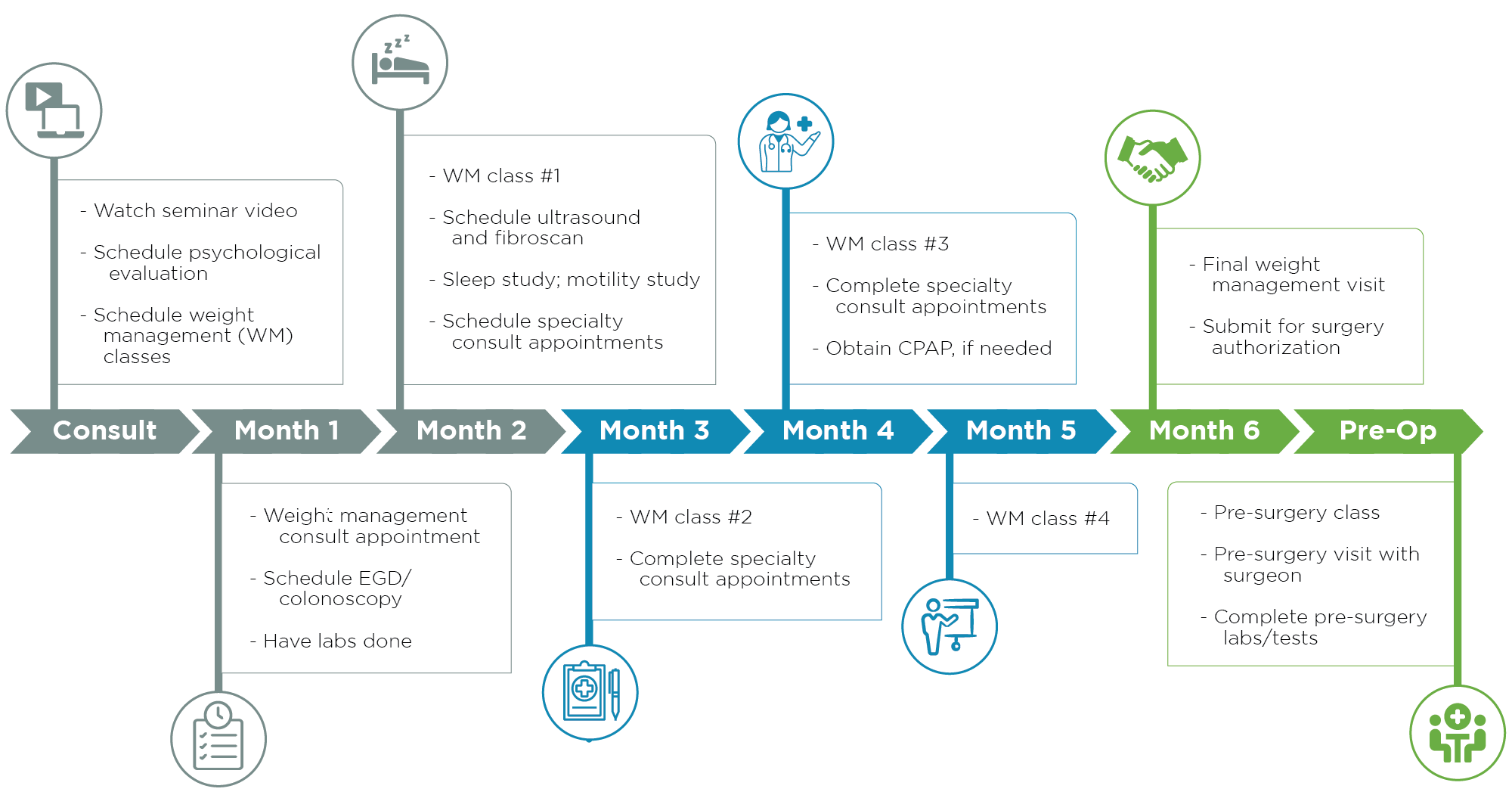
Welcome to the Bariatric Program
Our team offers resources to support you in guiding patients through their weight-loss journey. Here you’ll find clinical guidelines and health assessment tools, forms and eligibility requirements for referrals, a step-by-step overview of the patient workup process, and access to published research from our bariatric specialists. These materials are designed to help you better evaluate, prepare, and support your patients while staying informed of the latest evidence-based practices.
Understanding obesity and treatment options:
Bariatric Guidelines
Patients with a body mass index of 35 or greater have obesity. Obesity is recognized as a metabolic disease by the American Medical Association and patients should receive treatment just as they would for any other disease. It's important to understand the science of obesity and its treatment options.
The links below provide additional information about bariatric surgery and health assessments for patients with obesity.
Understanding Bariatric Surgery
This document contains key messages to share with patients, including: set point, diet, exercise and bariatric surgery results.
Surgery and Type 2 Diabetes
This document explains why metabolic surgery is a recommended treatment option for patients with type 2 diabetes and how it works.
Health Assessment Guide
This document aims to help you better assess the state of your patient's health and the health improvements associated with bariatric surgery.
A healthier tomorrow starts here:
Forms & Eligiblity
We’ve put together a Health Assessment Guide that aims to help you better assess the state of your patient’s health and the health improvements associated with bariatric surgery. Once completed, return to info@myfresnobariatrics.com or fax (559) 261-4501 so we can set up your patient's first appointment.
Patient Flow
Bariatric surgery is a journey that requires months of education, evaluation and understanding. For many of our patients, the workup might seem confusing and overwhelming. We've broken the patient workup into three main sections in the timeline below.
Our team set three primary patient goals throughout the six-month workup. Each goal is color-coded in the timeline at the bottom of this page and explained below.
- GRAY (Consult to Month 2)
Patient should obtain and evaluate his or her overall healthcare picture. - BLUE (Month 3 to Month 5)
Address patient healthcare needs and/or improvements to ensure best outcome. - GREEN (Month 6 to Pre-Op)
Finalize surgery preparation and obtain a surgery date.
Each section of the timeline relates to one of three specific goals our team sets for each patient on this journey, as noted above. The color-coded goals match the specific months of the journey in which they are fulfilled.

Bariatric publications and articles
The links below contain articles written by members of our team regarding surgical advancements and clinical trials. If you would like additional information on any of the papers below, please contact our office at (559) 433-6010.
Reversal of Roux-en-Y Gastric Bypass: Largest Single Institution Experience
Published 2019, Surgery for Obesity and Related Diseases (SOARD)
Editorial Comment on Reversal of Roux-en-Y Gastric Bypass
Published 2019, Surgery for Obesity and Related Diseases (SOARD)
Efficacy of Liposomal Bupivacaine in Port Site Injections
Published 2019, Surgery for Obesity and Related Diseases (SOARD)
We use cookies and other tools to optimize and enhance your experience on our website. View our Privacy Policy.

